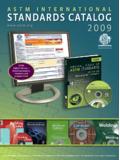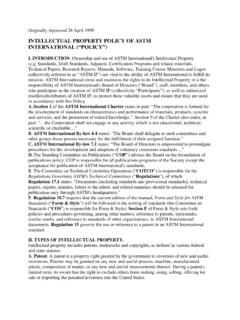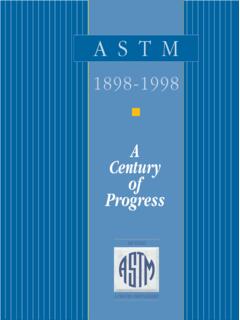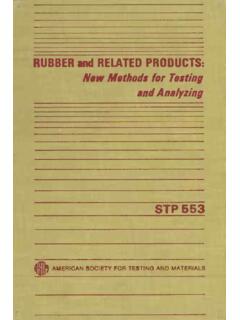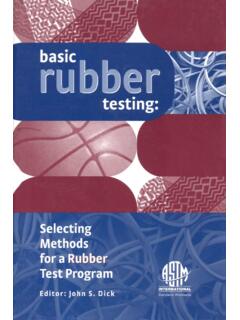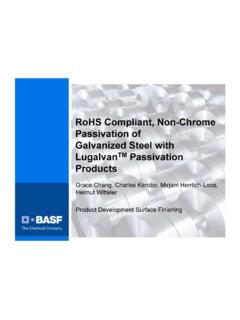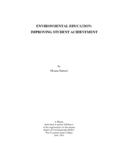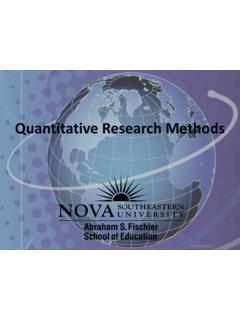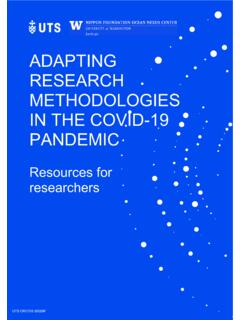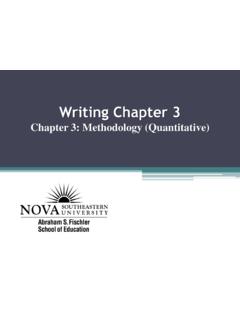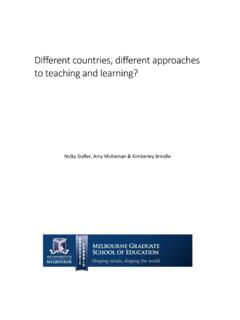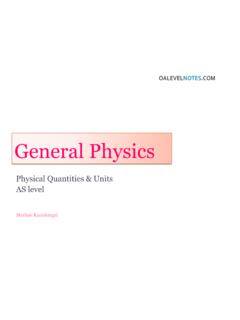Transcription of Precision and Bias - ASTM
1 Precision and BiasMeasurement - Method and ProcessWhat are Precision and bias ? Walter Shewhart said It is important to realize .. that there are two aspects of an operation of measure-ment; one is quantitative and the other qualitative . One consists of numbers orpointer readings such as the observed lengths in n measurements of the length ofa line, and the other consists of the physical manipulations of the physical things bysomeone in accord with instructions that we shall assume to be describable inwords constituting a text [Shewhart 1939, ]This leads to two concepts of measurement; a method of measurement and a measure-ment process. A measurement method consists of a prescription or written procedureby which one can go about the business of making measurements on the properties ofsome physical material.
2 A measurement process includes: (a) measurement method,(b) system of causes, (c) repetition, and (d) capability of control. A measurementprocess we could call a realization of a method in terms of particular individuals,particular equipment, and particular material to be tested. [ Murphy, 1961]Properties of the Measurement ProcessStatistical ControlIf we accept the concept of a measurement process we then move to thinking ofcontrolling that process. We can borrow terms from the language of statistical qualitycontrol. To qualify as a specification of a method of measurement, a set of instructionsmust be sufficiently definite to insure the statistical stability of repeated measurements ofa single quantity, that is, derived measurement processes must be capable of meetingthe criteria of statistical control.
3 [Eisenhart,1963 and Murphy, 1961]Statistical control connotes a sense of consistency or predictability, but there is muchmore to it. A series of repeat measurements of a quantity provide a logical basis forpredicting the behavior for future measurements of the same quantity by the samemeasurement process if an only if these measurements may be regarded as a randomsample from a population or universe of all conceivable measurements of the quantityby the specified measurement process. In practice, the measurements can be assumedto be a sample until evidence suggests otherwise. Control chart techniques are used tomonitor the process and provide the evidence of lack of MeanWhy this concern about consistency?
4 Aren t repeated measurements the same? Yes, ifthe measurement is coarse enough. Measurement of a person s height to the nearestmeter results in the same measurement almost every time, measurement of that heightto the nearest mm. does not. The inability to get exactly the same measurement of aparticular object at every attempt is explained by saying the measurements are affectedby errors, which are interpreted as manifestations of variations in the executions of theprocess of measurement resulting from imperfections of instruments, imperfecttechnique, less than ideal environs . So, if the measurements aren t the same, how tallis that person?
5 Obviously, the numbers aren t completely random. There is consistencyon, at least a coarse scale, taller people get bigger numbers. Are we searching fora true value ? Although an easy concept to express, the true value is, in mostcircumstances, unknowable. So where does this in control process lead? It leads to a limiting mean . Consider an in-control measurement process that is producing a series of measure-ments. If one were to calculate the arithmetic mean after each new measurement thereis a mathematical theorem that guarantees the sequence of cumulative means con-verges to a limit. In fact, virtually all such sequences from this process will converge tothe same limit.
6 This limiting mean :, the value of which each individual measurement istrying to express, can be regarded not only as the center of gravity of the infiniteconceptual population of all measurements that might conceivably be generated by themeasurement process under the specified circumstances, but also as the value of thequantity as determined by this measurement good is this rigor? These two ideas, random samples from a population and alimiting mean, establish the framework that enables one to make quantitative inferentialstatements about the value of the limiting mean from a finite set of numbers produced bythe measurement process.
7 However, the step from the inferential statements tostatements about the true value of the quantity measured must be based on subjectmatter knowledge and skill, but not on statistical of ErrorThe error in any measurement of a particular quantity is the difference between themeasurement and the true value of this quantity. However, since the true value isordinarily unknown and unknowable the error will also be unknown and unknowable. Limits to the error of a single measurement may be inferred from (a) the Precision , and(b) bounds on the systematic error, of the measurement process from which it wasproduced. There is some risk of being incorrect because the inference is based not oninformation from a specific measurement but only on the typical case of the errors thatare characteristic of measurements from the measurement ErrorsWhen the limiting mean is not equal to the true value, the concerned measurementprocess is said to have systematic error or bias .
8 The systematic error will usually haveboth constant and variable components. Generally, there are obvious and not soobvious sources of bias . Known constant bias can be eliminated or adjusted for. Unknown and/or variable sources need to be identified. bias adversely affects thestatistical control of a measurement process. Control charts for the process mean andprocess range are excellent tools for the detection of systematic errors. If the truth isnot known then bias cannot be Precision of a measurement process is the degree of agreement among measure-ments obtained from the measurement process being evaluated under prescribedconditions.
9 The process must be in a state of statistical control, otherwise the precisionof the process has no meaning. There is no implication of closeness to the true value. Repeated observation is fundamental to determining Precision . No information can begained from a single measurement. A measurement method cannot be described asprecise because the method can only realized in the context of a measurement processand as process parameters change Precision may accuracy of a measurement is the closeness of agreement between the test resultand the true value. This is straight forward. The accuracy of a measurement processis the degree of agreement of a set of measurements with the true value of the quantitybeing measured.
10 This is not so straight forward. There are two schools of thoughtregarding accuracy. One school argues that a process is accurate if the average of allmeasurements is close to the truth, regardless of the closeness of each individualmeasurement. The second school insists that accuracy should imply that any givenmeasurement is very likely to be close to the true value. The first school disregards anyprocess Precision and asks for low bias . The second requires both low bias and highprecision. To avoid confusion the ASTM asks for description of processes in terms ofprecision and bias in a Measurement ProcessPrecision changes with changes in the process.
